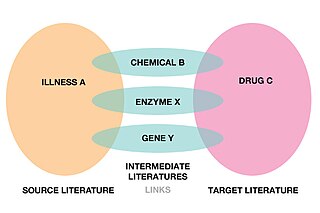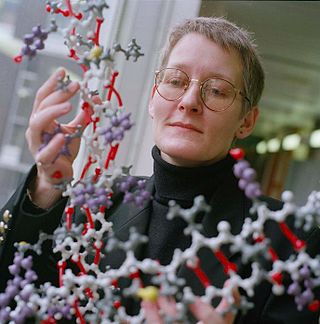Text mining, text data mining (TDM) or text analytics is the process of deriving high-quality information from text. It involves "the discovery by computer of new, previously unknown information, by automatically extracting information from different written resources." Written resources may include websites, books, emails, reviews, and articles. High-quality information is typically obtained by devising patterns and trends by means such as statistical pattern learning. According to Hotho et al. (2005) we can distinguish between three different perspectives of text mining: information extraction, data mining, and a knowledge discovery in databases (KDD) process. Text mining usually involves the process of structuring the input text, deriving patterns within the structured data, and finally evaluation and interpretation of the output. 'High quality' in text mining usually refers to some combination of relevance, novelty, and interest. Typical text mining tasks include text categorization, text clustering, concept/entity extraction, production of granular taxonomies, sentiment analysis, document summarization, and entity relation modeling.
In the field of bioinformatics, a sequence database is a type of biological database that is composed of a large collection of computerized ("digital") nucleic acid sequences, protein sequences, or other polymer sequences stored on a computer. The UniProt database is an example of a protein sequence database. As of 2013 it contained over 40 million sequences and is growing at an exponential rate. Historically, sequences were published in paper form, but as the number of sequences grew, this storage method became unsustainable.
PubMed is a free database including primarily the MEDLINE database of references and abstracts on life sciences and biomedical topics. The United States National Library of Medicine (NLM) at the National Institutes of Health maintains the database as part of the Entrez system of information retrieval.

UniProt is a freely accessible database of protein sequence and functional information, many entries being derived from genome sequencing projects. It contains a large amount of information about the biological function of proteins derived from the research literature. It is maintained by the UniProt consortium, which consists of several European bioinformatics organisations and a foundation from Washington, DC, USA.
Biomedical text mining refers to the methods and study of how text mining may be applied to texts and literature of the biomedical domain. As a field of research, biomedical text mining incorporates ideas from natural language processing, bioinformatics, medical informatics and computational linguistics. The strategies in this field have been applied to the biomedical literature available through services such as PubMed.
BioCreAtIvE consists in a community-wide effort for evaluating information extraction and text mining developments in the biological domain.
The Open Biological and Biomedical Ontologies (OBO) Foundry is a group of people dedicated to build and maintain ontologies related to the life sciences. The OBO Foundry establishes a set of principles for ontology development for creating a suite of interoperable reference ontologies in the biomedical domain. Currently, there are more than a hundred ontologies that follow the OBO Foundry principles.
The bibliome is the totality of biological text corpus. This term was coined around 2000 in EBI to denote the importance of biological text information. Similar terms that have been less frequently used are literaturome and textome. By approximate analogy to widely used terms like genome, metabolome, proteome, and transcriptome, this -ome would properly refer to the literature of a specified or contextually implied field, hence: biological bibliome, political bibliome, etc. However the term has not (yet) been applied outside the biological and medical sciences so it currently by default applies just to the biomedical fields. It would make little sense to apply it to a particular body of texts such as MEDLINE, despite a natural analogy that might seem to suggest this: the terms genome, proteome, channelome, metabolome, and transcriptome all usually assume a specific organism or cell set and a specific time point. The reason following this analogy would make little sense is that there is already an established term for this purpose, corpus.

Robert David Stevens is a professor of bio-health informatics. and former Head of Department of Computer Science at The University of Manchester
The Open Regulatory Annotation Database is designed to promote community-based curation of regulatory information. Specifically, the database contains information about regulatory regions, transcription factor binding sites, regulatory variants, and haplotypes.
Europe PubMed Central is an open-access repository that contains millions of biomedical research works. It was known as UK PubMed Central until 1 November 2012.
Rfam is a database containing information about non-coding RNA (ncRNA) families and other structured RNA elements. It is an annotated, open access database originally developed at the Wellcome Trust Sanger Institute in collaboration with Janelia Farm, and currently hosted at the European Bioinformatics Institute. Rfam is designed to be similar to the Pfam database for annotating protein families.
A relationship extraction task requires the detection and classification of semantic relationship mentions within a set of artifacts, typically from text or XML documents. The task is very similar to that of information extraction (IE), but IE additionally requires the removal of repeated relations (disambiguation) and generally refers to the extraction of many different relationships.

Co-occurrence network, sometimes referred to as a semantic network, is a method to analyze text that includes a graphic visualization of potential relationships between people, organizations, concepts, biological organisms like bacteria or other entities represented within written material. The generation and visualization of co-occurrence networks has become practical with the advent of electronically stored text compliant to text mining.
Jun'ichi Tsujii is a Japanese computer scientist specializing in natural language processing and text mining, particularly in the field of biology and bioinformatics.

Literature-based discovery (LBD), also called literature-related discovery (LRD) is a form of knowledge extraction and automated hypothesis generation that uses papers and other academic publications to find new relationships between existing knowledge. Literature-based discovery aims to discover new knowledge by connecting information which have been explicitly stated in literature to deduce connections which have not been explicitly stated.

Teresa K. Attwood is a professor of Bioinformatics in the Department of Computer Science and School of Biological Sciences at the University of Manchester and a visiting fellow at the European Bioinformatics Institute (EMBL-EBI). She held a Royal Society University Research Fellowship at University College London (UCL) from 1993 to 1999 and at the University of Manchester from 1999 to 2002.
In bioinformatics, a Gene Disease Database is a systematized collection of data, typically structured to model aspects of reality, in a way to comprehend the underlying mechanisms of complex diseases, by understanding multiple composite interactions between phenotype-genotype relationships and gene-disease mechanisms. Gene Disease Databases integrate human gene-disease associations from various expert curated databases and text mining derived associations including Mendelian, complex and environmental diseases.

Sophia Ananiadou is a Greek-British computer scientist and computational linguist. She led the development of and directs the National Centre for Text Mining (NaCTeM) in the United Kingdom. She is also Professor in Computer Science in the Department of Computer Science at the University of Manchester.
Biocuration is the field of life sciences dedicated to organizing biomedical data, information and knowledge into structured formats, such as spreadsheets, tables and knowledge graphs. The biocuration of biomedical knowledge is made possible by the cooperative work of biocurators, software developers and bioinformaticians and is at the base of the work of biological databases.





